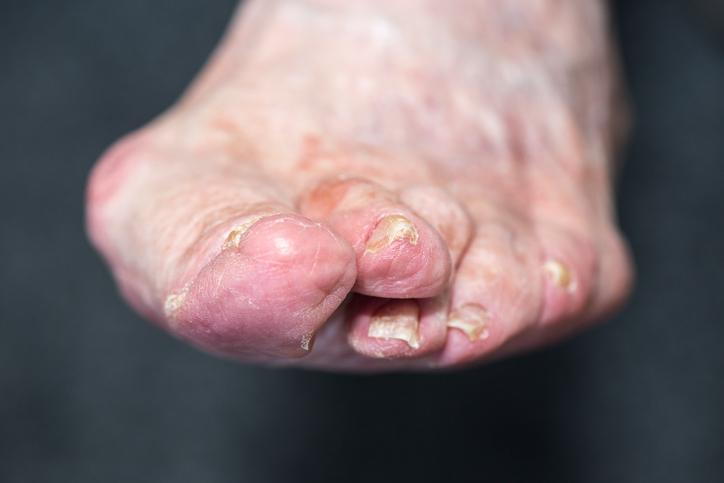All About Hammertoe Surgery
posted: Dec. 30, 2016.

For some people with a hammertoe, surgery is an appropriate option when non-surgical options have failed to provide adequate relief of pain. In many cases, the deformity has progressed to the point where it has become more rigid and painful, and it may lead to open sores.
Surgery reduces the contracture or bending and puts the toe in a straighter position thus, relieving pain and pressure and enabling the patient to resume normal activities.
What is a hammertoe?
A hammertoe is a deformity that causes a toe to become bent upward in the middle, resembling a hammer. Hammertoes often occur in conjunction with other toe problems. For instance, it is possible to develop corns on top of the middle joint of the hammertoe. Hammertoes may also be associated with bunion deformities.
Patients who have hammertoes try to manage this foot condition by treating the symptoms. This involves padding the toe and stretching or changing footwear for comfort. If you still experience discomfort from the hammertoe, surgery is considered.
Hammertoes can either be flexible or stiff. Several different surgeries can be used to treat the hammertoe depending on the flexibility of the toe.
What is the goal of hammertoe surgery?
The main goal of the surgery is to treat the pain that did not get better with non-surgical treatments and reduce the deformities
What signs indicate hammertoe surgery is required?
If you are still experiencing pain or discomfort when wearing shoes after trying non-operative treatments, hammertoe surgery is an option.
When should hammertoe surgery be avoided?
Reasons to avoid hammertoe surgery includes:
- Poor circulation
- Active infections
- Any serious illness that might make the surgery unsafe
General Details of Hammertoe Surgery
Most cases of hammertoe correction are done as an outpatient procedure. It can be done in the office of Sheldon Nadal, DPM - our podiatrist. This means that you can go home after the surgery. It can be performed with local anaesthetics with minimally invasive techniques.
What happens after a hammertoe surgery?
After the surgery, you might be given a special shoe to wear to help with walking. The oe may be taped for 4-6 weeks.
Complications specific to hammertoe surgery include a small chance that the hammertoe may develop again after your surgery. There is a risk that you may feel like your toe is unstable following the surgery. Complications, however, are rare. Potential complications prior to undergoing hammertoe correction will be discussed by Sheldon Nadal, DPM in his Toronto foot clinic
For more inquiries on Hammertoe Surgery, call Sheldon Nadal, DPM at (416) 486-9917.